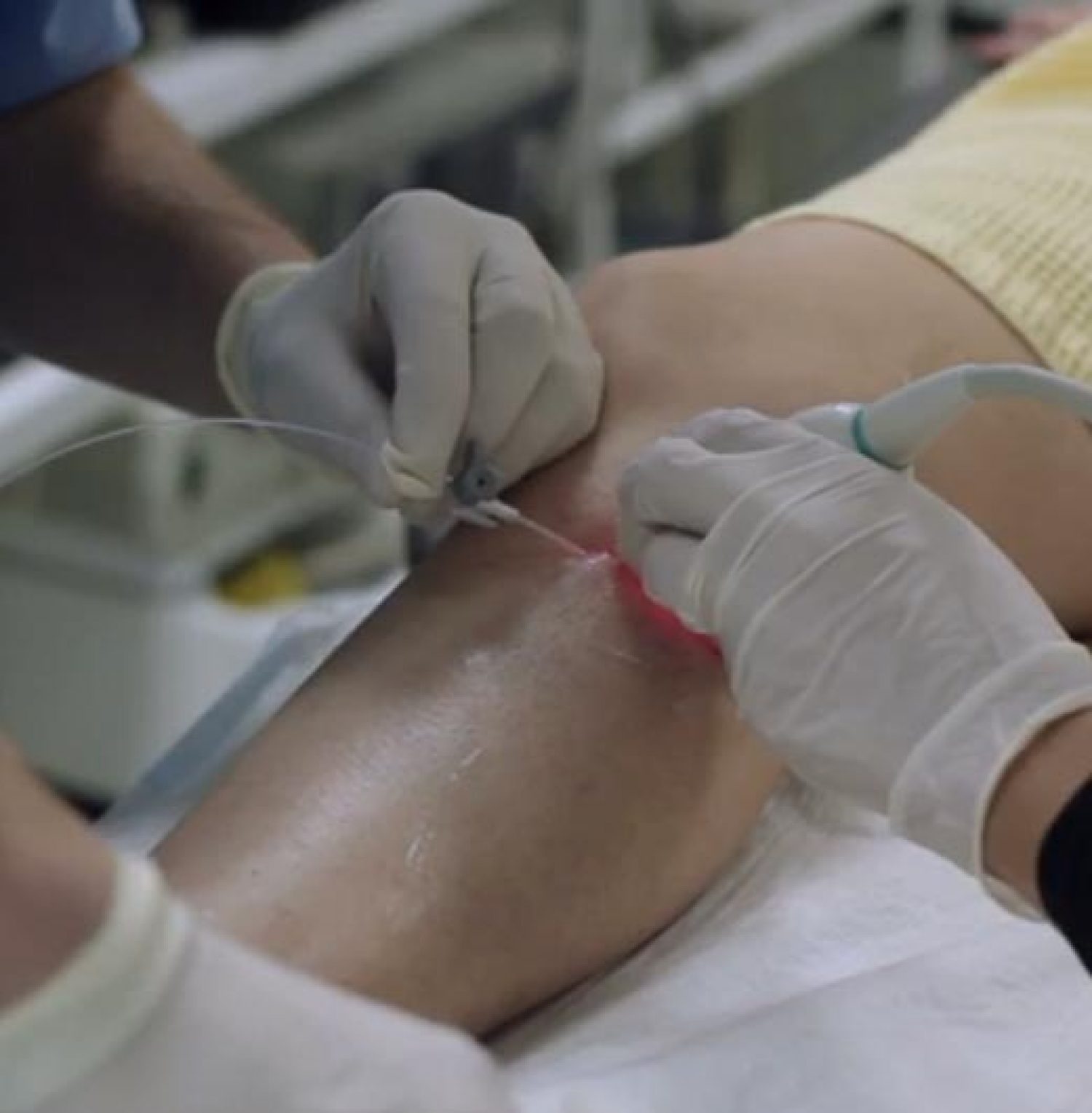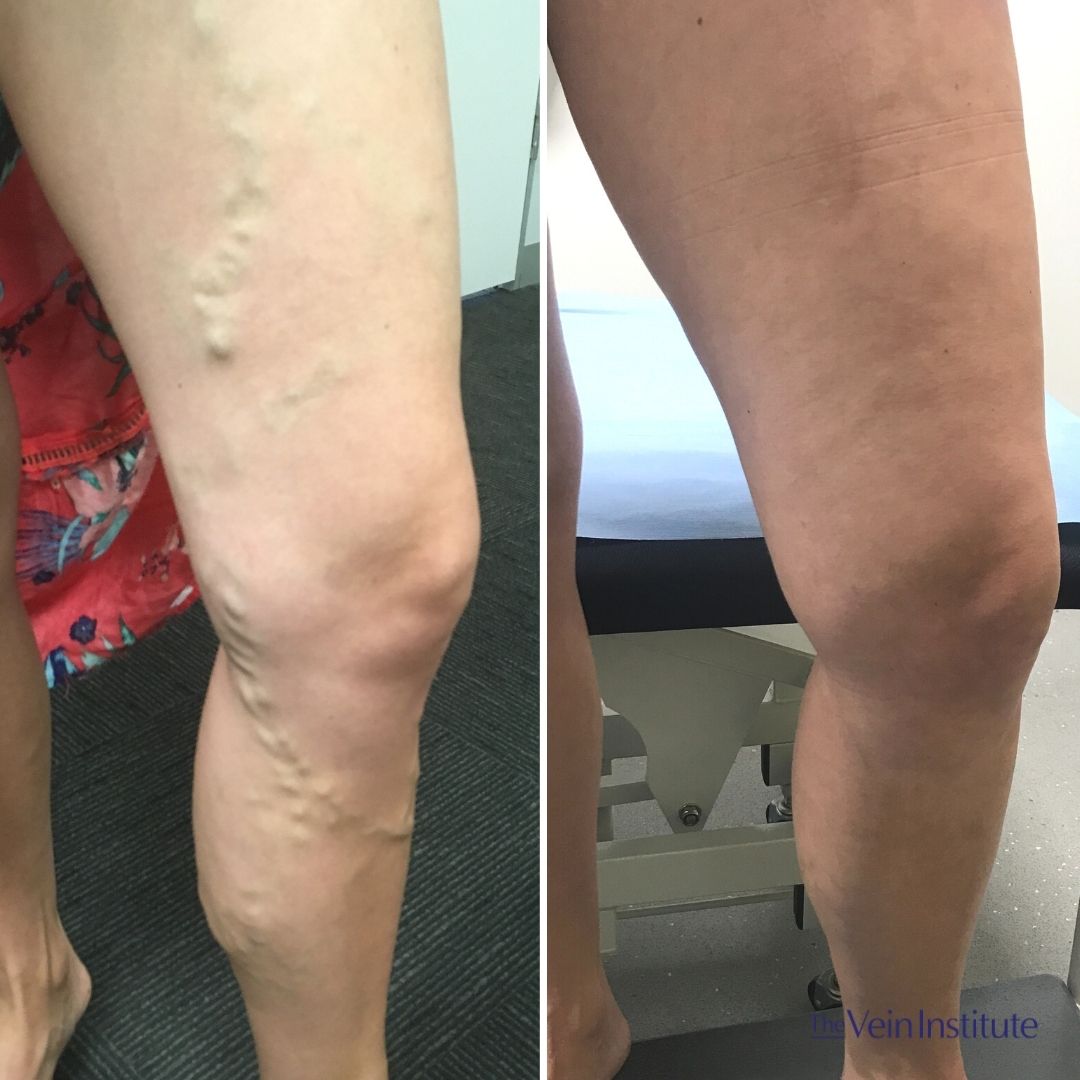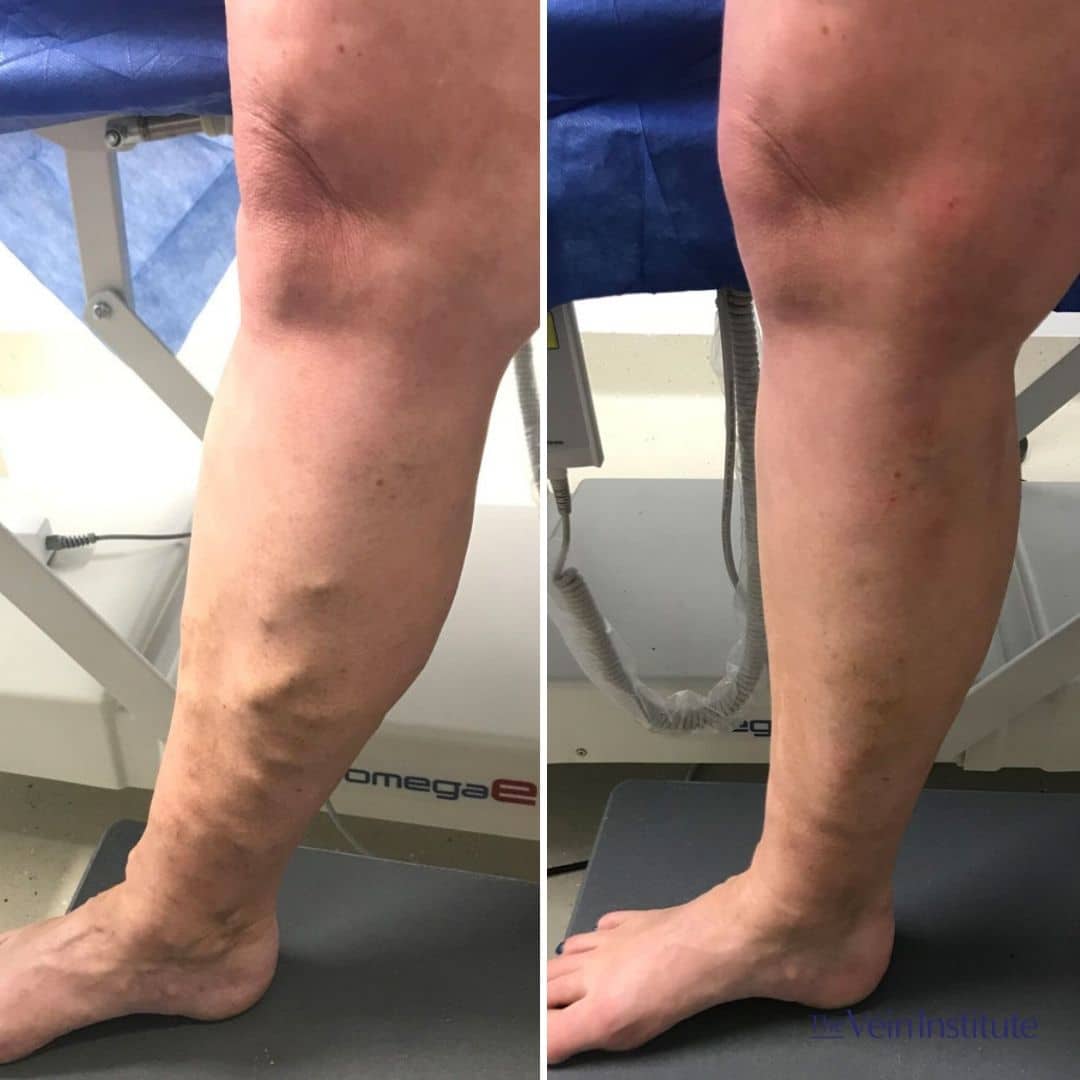What Is Endovenous Laser Ablation (EVLA)?
Endovenous laser ablation (EVLA) is a minimally invasive laser treatment for varicose veins. During the procedure, we make a tiny incision and feed a thin laser fibre into the vein. The laser located at the tip of the fibre works at a frequency ranging from 810 to 1470 (nm). The intense heat causes the blood in the vessel to clot, sealing the vein and stopping blood flow. As we use regional anaesthetic, you should not be able to feel this happening. Over time, the varicose vein fades, and your body will reroute blood flow through other healthy blood vessels.
Over the past decade, this procedure, along with Radiofrequency ablation (RFA), emerged as a gold standard treatment for feet and legs due to its high success rate, short recovery time, and minimal discomfort. We have found our patients get the best results when we combine it with sclerotherapy.
What are the differences between EVLA and Radiofrequency Ablation?
Although the differences between radiofrequency ablation and EVLA are minimal, our experts may decide one is preferable over the other, depending on the patient.
For example, EVLA tends to be better suited for patients whose veins are larger in diameter or if blood clots are present. For other patients, RFA is the better choice because it often results in less discomfort and bruising and has a lower risk of complications overall.
Why is ultrasound used in EVLA treatments?
Ultrasound imagery is integral component of EVLA because it helps doctors guide the laser fibre through the vein. It essentially creates a picture of your vascular network and allows the doctors to see what’s happening inside your body and where to pull the fibre for the best results. It can also reveal blood clots – a condition known as deep vein thrombosis (DVT).
What to expect during the procedure
- Your doctor will numb the area where the laser will enter with local anaesthetic and make a tiny incision.
- They will use ultrasound imaging to reveal the problem vein and its path throughout your body.
- They will then insert a thin fibre into the vein through the tiny incision, using ultrasound to guide the fibre along.
- Following that, they’ll heat the vein and seal it shut as they slowly remove the fibre back along its path.
- Finally, they’ll cover the incision site with a bandage and apply pressure. As the incision is small, we won’t need to apply sutures or stitches.
How to prepare for your EVLA treatment
- Make sure to eat before your EVLA treatment. Like with a blood test, coming in on an empty stomach could make you feel faint.
- Drink plenty of water (at least 2 glasses, or 500 ml) within an hour of your treatment. Being well-hydrated will reduce the risk of clotting and minimise post-treatment symptoms like swelling and pain.
- You should wear loose-fitting pants because your legs will be wrapped with elastic bandages after the procedure.
- Lastly, avoid shaving your legs the morning of the treatment.
Laser ablation post-op care
You’ll be allowed to go home almost immediately after your procedure. To help with your recovery, you’ll need to drink plenty of water and wear the compression wraps that we provide continuously for 24 hours, and special compression socks for a further 3 – 5 days. You will also need to walk a minimum of 30 minutes each day for 2 weeks after treatment. These steps will ensure minimal swelling and reduced discomfort.
What are the risks of EVLA?
Endovenous laser ablation is a very low-risk procedure. You may experience some bruising and discomfort for a few days to weeks, but it should not impact your daily life. Although complications with EVLA are extremely rare, there are some potential side effects, including deep vein thrombosis (<1% risk), never injury, and skin burns.
Want to learn more? Read our post about The 5 things to know before laser treatment for varicose veins.
Before and after laser ablation for varicose veins
Following your treatment, you’ll see a 60-80% shrinkage of the veins. You’ll also likely notice a reduction in symptoms (or no symptoms at all). However, it can sometimes be difficult to tell since EVLA and sclerotherapy (used to treat small, twisted, adjoining veins) have side effects similar to varicose vein symptoms.
To see more before and after varicose vein treatment photos, click here.
Have Questions about Endovenous Laser Treatment for your veins?
We have listed some of our most asked questions below. If you would like to speak to someone please contact us on 04 2010 2637 or make an appointment.
How long does the procedure take?
How much does Endovenous Laser Ablation (EVLA) treatment cost?
What are the possible complications of Endovenous Laser Ablation (EVLA) treatment?
Make an Informed Decision
You should not consider any medical procedure without due diligence. Also, this is why all our patients undergo an initial first consultation with one of our doctors. During this consultation, an ultrasound scan of your legs is taken. This gives us a thorough understanding of the severity of the varicose veins. Also, this allows the doctor to prescribe you the most suitable treatment program.
After your first consultation, you will have all the information you need to make an informed decision as to whether or not the treatment program is suitable for your and your circumstances.
To book your first consultation and to discuss our treatment program, call 04 2010 2637 or contact us to receive a callback from us.
Read more:
The difference between Endovenous Laser Ablation and Radiofrequency Ablation.






